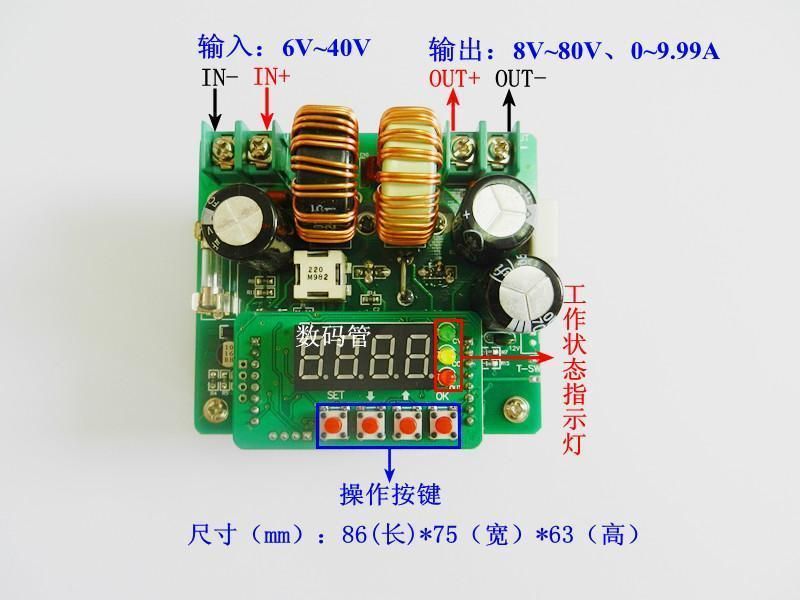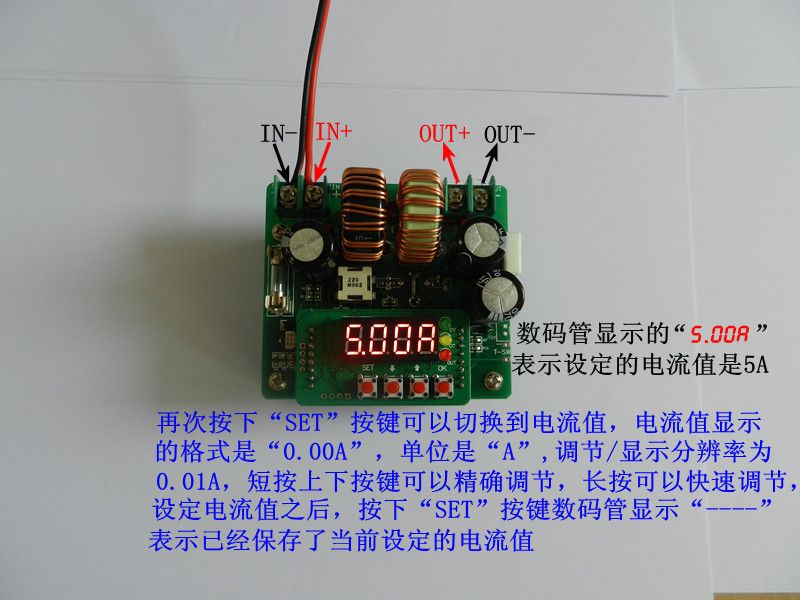Also beware that China Man speak bad English sometimes
he calls this a BUCK CONVERTER but I don't think so.
It looks like a simple circuit? But i don't know.
Chip number XL4016
http://www.ebay.com/itm/8A-DC4-40V-
To-DC2-36V-Buck-Power-Converter-200W-XL4016-
PWM-Volt-Step-Down-Moudle-/262159873990?hash=item3d09f237c6:g:FgkAAOS
wHQ9WVYQj

Description
Main parameters:
Product name: DC voltage converter
Conversion method: PWM
Input voltage: DC 4-40V
Output voltage: DC 1.25-36V
Max current: 8A
Max power: 200W
Conversion efficiency: 94%
Switch frequency: 180KHz
Appearance size: 61*41*27mm
Features:
This product uses XL4016 switch voltage conversion chip, and
realizes double rectification by collaborating with MBR10200.
Max input can reach 40V, continuously adjustable
for 1.25~36V output.
Max output current can reach 8A.
Need a fan.
Recommend no more than 5A for long-time work.
Support panel installation:
1. Drill a hole for 7mm on the panel.
2. Extend potentiometer handle.
3. Tighten the screw and cover the knob.
Package List:
1 x 200W XH-M401 DC-DC 4-40V To 1.25-36V Buck Module 8A XL4016E1 Voltage Converter
he calls this a BUCK CONVERTER but I don't think so.
It looks like a simple circuit? But i don't know.
Chip number XL4016
http://www.ebay.com/itm/8A-DC4-40V-
To-DC2-36V-Buck-Power-Converter-200W-XL4016-
PWM-Volt-Step-Down-Moudle-/262159873990?hash=item3d09f237c6:g:FgkAAOS
wHQ9WVYQj

Description
Main parameters:
Product name: DC voltage converter
Conversion method: PWM
Input voltage: DC 4-40V
Output voltage: DC 1.25-36V
Max current: 8A
Max power: 200W
Conversion efficiency: 94%
Switch frequency: 180KHz
Appearance size: 61*41*27mm
Features:
This product uses XL4016 switch voltage conversion chip, and
realizes double rectification by collaborating with MBR10200.
Max input can reach 40V, continuously adjustable
for 1.25~36V output.
Max output current can reach 8A.
Need a fan.
Recommend no more than 5A for long-time work.
Support panel installation:
1. Drill a hole for 7mm on the panel.
2. Extend potentiometer handle.
3. Tighten the screw and cover the knob.
Package List:
1 x 200W XH-M401 DC-DC 4-40V To 1.25-36V Buck Module 8A XL4016E1 Voltage Converter

 This is what I found out about the scooter motor
This is what I found out about the scooter motor
 Sposta bee here in 2 weeks
Sposta bee here in 2 weeks




 I am thinking about it. I am charging batteries.
I am thinking about it. I am charging batteries.

 My conventional horns are sticking out all
My conventional horns are sticking out all 











Comment